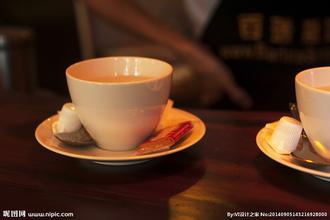Introduction to the quality characteristics of Costa Rican yellow honey coffee flavor description treatment
Introduction to the quality characteristics of Costa Rican yellow honey coffee flavor description treatment
All the coffee trees planted in Costa Rica are Arabica coffee trees. through improvement, the quality of coffee beans is better and more stable. in order to facilitate picking, coffee trees are kept at a height of about 2 meters through continuous pruning. The coffee that people eat is the taste of the seeds in the fruit that are brewed in water. After picking raw coffee beans, you must remove the peel, pulp, seed film and sun exposure before the seeds (that is, coffee beans) can be roasted. Part of the process can be replaced by machines, and the speed of coffee production increases a lot. However, there is no machine to do coffee picking, so you must use manual labor. Other kinds of Brazilian coffee, such as Rio and Parana, can be produced in large quantities because they do not require too much care. Although the taste is rough, it is a kind of high-quality and inexpensive coffee, which has its own standards because it is distributed all over the country and varies in quality (NO.2~NO.8 according to the number of sundries, NO.13~NO.19 according to the size of beans, and six grades according to taste). Almost all Arabica species are of good quality and stable in price. The most famous one is Costa Rica, which has been a necessity of blended coffee and is familiar to the public since ancient times.
Costa Rica in order to strengthen the export of high-quality coffee to Europe, America, Japan and other countries. Just began to vigorously develop high-quality coffee and increase the added value of coffee exports. At the same time, the government has set up a "coffee trust fund" to help coffee farmers in need tide over their financial difficulties and cultivate high-quality coffee. And in order to make coffee have better quality and characteristics, we used the popular honey treatment method in recent years to change the reputation of poor quality coffee. Therefore, the Costa Rican boutique coffee we are now exposed to is the fine processed honey beans of each of its estates. However, there are still ordinary sun-treated coffee beans, but the quality and flavor are not so good, so there is no honey treated beans trade extensive Costa Rica's boutique coffee has only begun to emerge in the past decade. Although Costa Rica introduced coffee from Cuba as early as 1729 and carried out commercial cultivation, it made great efforts to develop the coffee bean industry. But it mainly produces and distributes mixed coffee beans and Italian commercial beans for export to its nearest neighbor, the United States, which is one of the largest coffee consumers. Because of this, the quality of Costa Rican coffee beans at that time had not yet reached the level of fine coffee. Moreover, due to the poor quality of coffee beans, Costa Rica does not have a national standard (a national standard for regulating the grade of raw coffee beans), because its country is not qualified to evaluate it.
Other coffees worth mentioning are JuanVinas,PR, H.Tournon, Windmill,SHB, Montebello and SsntaRosa. Fine coffee is generally grown in Geredia and the central canyon. Another striking type of coffee is Sarchi (one of the five towns that represent Costa Rica's Coffee Road), which grows on the slopes of the PoasVolcano volcano, 53km from San Jose. Saatchi, founded in 1949, has a land area of 30770 hectares and grows sugar cane and coffee. The area is also famous for its handicrafts, attracting tourists from all over the world

Important Notice :
前街咖啡 FrontStreet Coffee has moved to new addredd:
FrontStreet Coffee Address: 315,Donghua East Road,GuangZhou
Tel:020 38364473
- Prev

Geographical Flavor description of Sumatran Coffee Variety characteristics and producing areas
Description of the geographical flavor of Sumatran Coffee Variety characteristics Lindong producing area is located next to the famous tourist area LAKE TOBA (Lake dopa) in Sumatra, where the elevation is 1400-1800, and the tree species are Jember, Garundang Typica and Ateng. Once upon a time, Lindong coffee was famous, but now coffee farmers there are in order to promote the harvest time of coffee.
- Next

Introduction to varieties of Grinding scale for Flavor description of Rosa Coffee in Panamanian Jadeite Manor
Panamanian Emerald Manor Rose Summer Coffee Flavor description Grinding scale Variety introduction La Esmeralda Manor has won 12 coffee competitions so far, and has set a record of three highest bids of US $21 in 2004, US $50.25 in 2006 and US $130 in 2007! Of course, other countries have also raced a pound close to 50.
Related
- Detailed explanation of Jadeite planting Land in Panamanian Jadeite Manor introduction to the grading system of Jadeite competitive bidding, Red bid, Green bid and Rose Summer
- Story of Coffee planting in Brenka region of Costa Rica Stonehenge Manor anaerobic heavy honey treatment of flavor mouth
- What's on the barrel of Blue Mountain Coffee beans?
- Can American coffee also pull flowers? How to use hot American style to pull out a good-looking pattern?
- Can you make a cold extract with coffee beans? What is the right proportion for cold-extracted coffee formula?
- Indonesian PWN Gold Mandrine Coffee Origin Features Flavor How to Chong? Mandolin coffee is American.
- A brief introduction to the flavor characteristics of Brazilian yellow bourbon coffee beans
- What is the effect of different water quality on the flavor of cold-extracted coffee? What kind of water is best for brewing coffee?
- Why do you think of Rose Summer whenever you mention Panamanian coffee?
- Introduction to the characteristics of authentic blue mountain coffee bean producing areas? What is the CIB Coffee Authority in Jamaica?

